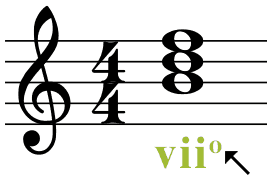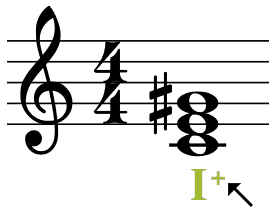Roman Numeral Analysis in Music
If you ever find yourself in a music theory course, you will inevitably come across Roman numeral analysis. Check out this article to learn more!

If you ever find yourself in a music theory course, you will inevitably come across Roman numeral analysis. In music, Roman numerals are used to represent chords, coordinating with scale degrees 1-7. For instance, “IV” denotes the chord built on the fourth degree of a scale. Analyzing a piece of sheet music with Roman numerals allows us to be able to understand music on a deeper level by diving into chord progressions, chord qualities, and inversions.
To quickly review scale degrees, let’s observe a C Major scale.

Scale degree numbers are the same for every scale: scale degree 1 is the first note of a scale, scale degree 2 is the second, scale degree 3 is the third, and so on.
While scale degrees refer to single notes, Roman numerals refer to chords. For example, you wouldn’t call an F Major chord in C Major a “scale degree four chord.” You’d simply call it a “four chord.” And though some may opt to simply write the number “4,” for more advanced music analysis, Roman numerals are used. There are a few reasons why.
Identifying Major and Minor Chords
While numbers aren’t able to differentiate between major and minor chords, Roman numerals are. To demonstrate, let’s go back to our C Major scale and build triads on each of the scale degrees.

Notice how some of the Roman numerals are uppercase and others are lowercase.
- Uppercase Roman numerals represent major chords.
- Lowercase Roman numerals represent minor chords.
Of course, we can’t look at this example and assume that every chord built on scale degree “2” will be minor. The quality of the chords will depend on the key. For example, let’s look at A Minor.

The more comfortable you are with your key signatures, the more comfortable you will be with Roman numerals.
Identifying Augmented and Diminished Qualities
You may have noticed the small circle next to the vii and ii chords above.

This symbol signifies that a chord is diminished. Diminished chords are made up of only minor thirds.
In the same way, a “+” sign is used to signify an augmented chord. Augmented chords are a major triad or seventh chord with a raised fifth.

Identifying Inversions
Roman numerals make identifying inverted chords a breeze! Inversions in music occur when the notes in a triad or seventh chord are rearranged so that a different note is in the lowest position of the chord. Figured bass numbers are added to Roman numerals to identify the type of inversion. Keep in mind that the root refers to scale degree one in a key, while bass refers to the lowest note of the chord.

What does the “M” mean? Click here.
As you can imagine, if you were using scale degree numbers instead of Roman numerals to identify chords, adding the inversion numbers could get confusing.
Application
To reiterate, Roman numerals help us analyze and understand music. Observe the image below to see what Roman numeral analysis looks like on sheet music.

Excerpt from “Clocks” by Coldplay.
Breaking down the first Roman numeral we see in the excerpt above, we can recall that the “V” represents the chord built on the fifth scale degree of the key. Since this song is in A-Flat major (click here for help on identifying keys), we can determine that the “V” chord is an E Flat chord. Next, looking at the numbers “6” and “4,” we can determine that the chord is a triad in the second inversion.
Roman numerals allow us to dissect a piece of music, regardless of the key it’s in, so you can use this application for any song! Though we’ve used a piece with a fairly simple chord progression, Roman numerals will help you out in more complex compositions, especially classical works. And like we said, if you’re a music major or are taking a music theory class, you simply won’t be able to avoid them.
We hope you now feel a little more acquainted with Roman numeral analysis and are ready to dive deep into your next piece of sheet music!

